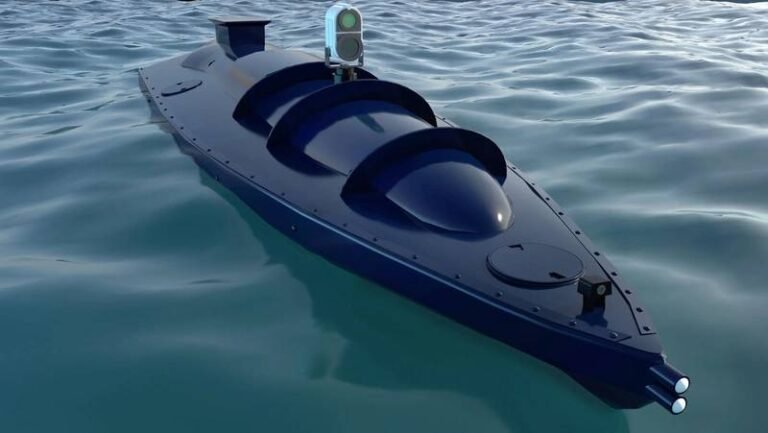The Rise of Sea Drones: Taiwan’s Asymmetric Naval Warfare Strategy
In the shadow of the Taiwan Strait, a new chapter in asymmetric naval warfare is unfolding. Drawing lessons from Ukraine’s strategic use of maritime drones in the Black Sea, Taiwan is adapting similar technologies as a low-cost, high-impact defense against an increasingly assertive Chinese Navy.
SeaShark 800: Taiwan’s Unmanned Surface Vessel
Off Taiwan’s eastern fishing port of Wushi, Thunder Tiger — a local defense technology company — has been testing the SeaShark 800, an uncrewed surface vessel (USV) capable of carrying 1,200 kg of explosives across distances up to 500 km. Developed under the government’s “Swift and Sudden” program, the initiative is part of a broader shift toward asymmetric warfare, prioritizing smaller, mobile platforms over traditional large-scale naval assets.
Lessons from Ukraine
While the U.S. has long advocated for Taiwan to invest in asymmetric capabilities, the war in Ukraine has served as a real-world proving ground for how sea drones can disable or deter more powerful navies. Ukraine’s successful strikes against Russia’s Black Sea fleet using low-profile, explosive-laden USVs have become case studies for naval strategists worldwide.
Strategic Value of Sea Drones
Sea drones offer a particularly appealing strategic value: low signature, low cost, and high potential for disruption in contested waters. By flooding the Taiwan Strait with unpredictability, these platforms create a tactical ambiguity that China must account for, according to Thunder Tiger Chairman William Chen.
Integration and Innovation
Successful deployment of sea drones isn’t just about platform capability. It’s about integration. Peter Chen of the Taiwan Research and Development Association notes that embedding these drones effectively into operational doctrine is where military leadership must innovate.
Future Prospects
As China modernizes its navy and conducts frequent military drills, Taiwan’s push to accelerate drone capabilities marks a significant shift in regional defense posturing. The SeaShark 800 and similar platforms operate as offensive and defensive force multipliers, with potential for ISR, mine countermeasures, and anti-submarine warfare support.
From a subsea and maritime industry perspective, Taiwan’s initiative offers a real-time laboratory in blending commercial drone innovation with forward-thinking naval strategy.
(Reuters + Staff)

